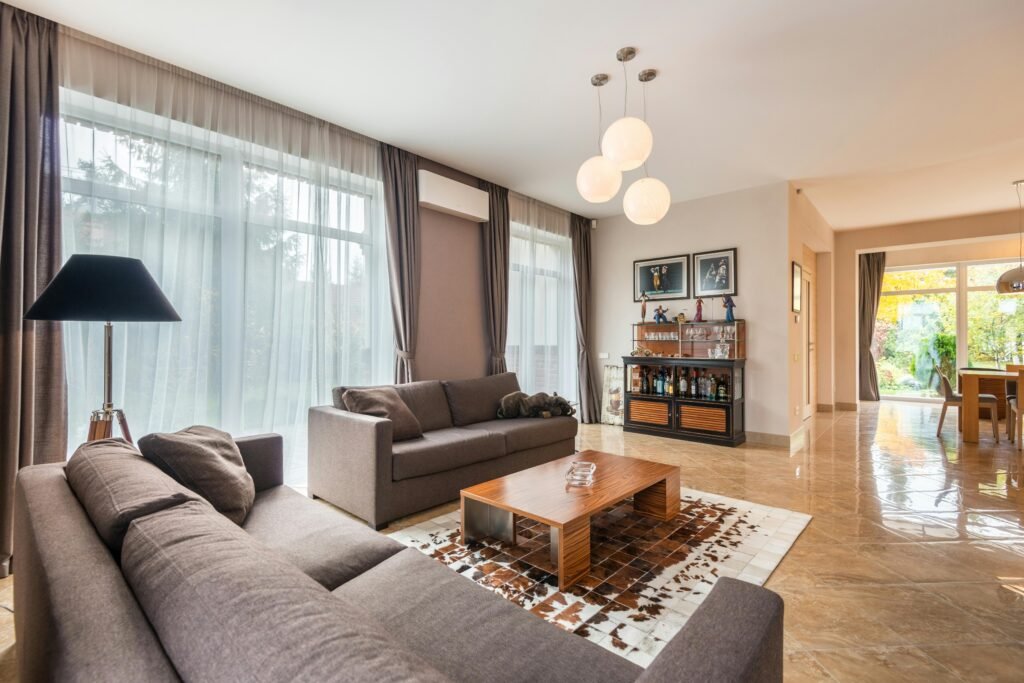The way you place your sofa can dramatically impact the feel and function of your space. So, if you’re like me and want to get it just right, keep reading to discover some practical tips and creative ideas for setting up your sofa in your hall.
Understanding Your Space
Measure Your Hall
First things first, grab a tape measure and note down the dimensions of your hall. This is a crucial step to ensure your sofa fits well without overcrowding the space. Measure the length and width of the room, and don’t forget to consider doorways and windows. Having these measurements on hand will help you plan more effectively.
Identify the Focal Point
Every room needs a focal point. It could be a fireplace, a TV, a large window, or a piece of art. Identifying the focal point helps in deciding where your sofa should be placed. It’s usually best to position the sofa facing or perpendicular to this focal point to create a balanced look.
Sofa Placement Ideas
Against the Wall
Placing the sofa against the wall is a classic choice and works well, especially in smaller halls. This arrangement maximizes floor space and keeps the room open and airy. However, make sure to leave a few inches between the sofa and the wall to prevent a cramped feel and allow for some air circulation.
Center of the Room
If you have a larger hall, consider placing the sofa in the center. This “floating” arrangement can create a cozy and inviting seating area. Use a rug to anchor the space and make it feel more intentional. You can also place a console table behind the sofa to add some extra storage and style.
Angled Placement
For a more dynamic look, try angling your sofa. This can be especially effective in rooms with an unconventional shape or where you want to create a more relaxed atmosphere. Angling the sofa can also help direct traffic flow in a natural way.
Complementing with Other Furniture
Pairing with Chairs
When adding chairs to your seating arrangement, aim to create a balanced and inviting space. Place chairs opposite or at an angle to the sofa to encourage conversation. Ensure there’s enough space between pieces for people to move around comfortably. Adding a coffee table or an ottoman in the center can pull the arrangement together nicely.
Side Tables and Lamps
Side tables and lamps are not just functional but also add to the aesthetics of the room. Place side tables at the ends of the sofa to hold drinks, books, or decorative items. Lamps can provide essential lighting and enhance the room’s ambiance. Floor lamps behind the sofa can add a stylish touch and provide extra light.
Balancing the Layout
Symmetry vs. Asymmetry
Decide whether you want a symmetrical or asymmetrical layout. A symmetrical arrangement creates a formal and balanced look, perfect for traditional or minimalist styles. Place matching chairs or tables on either side of the sofa for this effect. Asymmetry, on the other hand, offers a more relaxed and eclectic feel. Mix and match different furniture styles and sizes to achieve this look.
Color and Texture Coordination
Ensure your sofa complements the room’s color scheme and textures. Neutral-colored sofas are versatile and allow you to change accent colors with pillows, throws, and rugs. If you opt for a bold-colored sofa, keep other elements in the room more subdued to avoid visual clutter.
Personal Touches
Add personal touches to make the space feel like home. Display family photos, artwork, or souvenirs that reflect your personality and interests. Plants can also bring life and freshness to the hall, adding both aesthetic appeal and a sense of tranquility.

